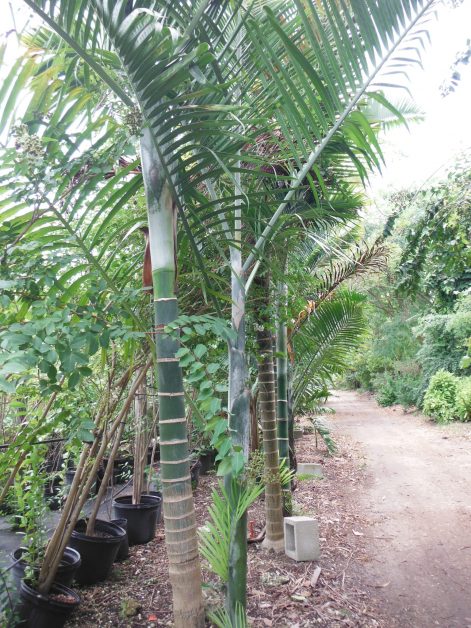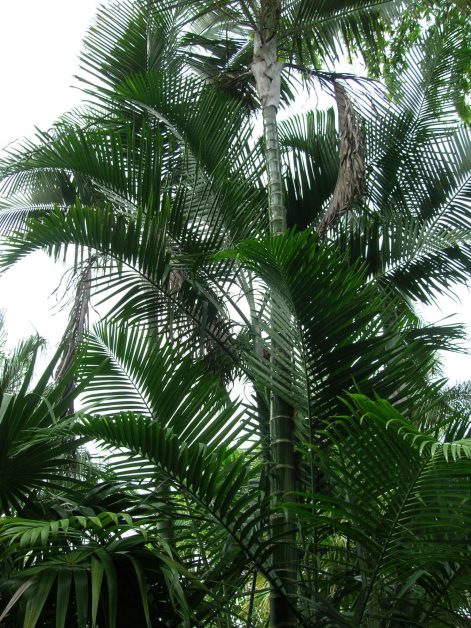The palm from . . . where?
To say that Dypsis cabadae has taken a long, tortuous path to discovery would be a major understatement. Superficially, it appeared that the species was first found in the early 1950s in the garden of a Dr. Cabada near Cienfuegos, Cuba, but it could not be identified. After Cabada’s death, the director of Harvard University’s nearby Atkins Garden took seed from the doctor’s fruiting plant to propagate. Soon the seedlings were observed by botanist Dr. Harold E. Moore, Jr., on a visit from his home base, Cornell University. Moore immediately knew that Cabada’s mystery palm could not have been a New World species; it bore obvious signs of belonging to the genus Chrysalidocarpus, whose species are native only to Madagascar and some small neighboring islands.
Moore waited 10 years, until 1962, to name the species Chrysalidocarpus cabadae, yet it was still unknown in its putative homeland. Meanwhile, the species was introduced into southern Florida, and in 1987 was reclassified as Dypsis cabadae. Even then, its origin remained a question mark. Only in the past 10 years has a native stand been found in the Comoros, an island nation lying between northwestern Madagascar and Mozambique.
Dypsis cabadae is a stunning, water-loving species, far surpassing its cousin, the innacurately-dubbed Areca Palm (Dypsis lutescens), in ornamental appeal. Its bamboo-like stems are dark green overlain by white rings that mark where leaves were once attached. In southern Florida it reaches 30-40 ft. over time and can be grown in exposures from sunny to lightly-shaded. This beautiful Old World species can be found at Richard Lyons’ Nursery in 3-gal. containers.
- Dypsis cabadae (Cabada Palm)
- Dypsis cabadae (Cabada Palm)


